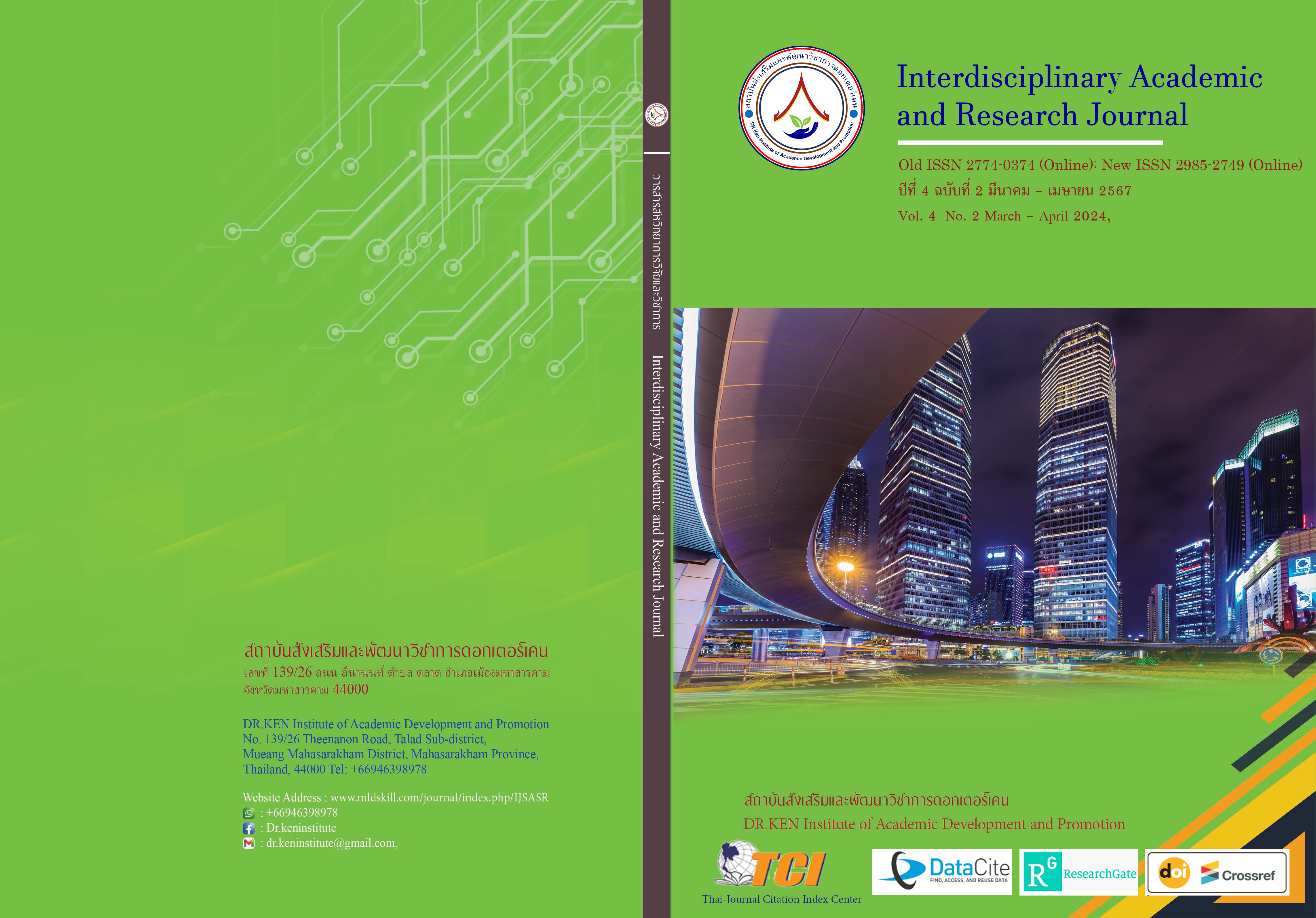Strategic Leadership of School Administrator under the Nakhonratchasima Secondary Education Service Area Office
DOI:
https://doi.org/10.60027/iarj.2024.273531Keywords:
Leadership Status; , Strategic Leadership; , Educational AdministratorsAbstract
Background and Aims: Strategic leadership is the ability to set direction. Inspire Define the vision in line with environmental changes both inside and outside the organization by adhering to the goals and missions of the organization, as well as being able to convey and drive strategic management to succeed well. The objectives of this study are: 1) to Study the strategic leadership of educational administrators affiliated with the Secondary school's educational office in Nakhon Ratchasima province, and 2) to compare the strategic leadership of educational administrators affiliated with the Secondary schools' educational office in Nakhon Ratchasima province based on educational level and school size.
Methodology: It is quantitative research. The population used in the research was 2,763 teachers of schools under the Nakhon Ratchasima Secondary Education Area Office in the academic year 2566 and 337 samples using the preliminary sampling method. The research tools used included questionnaires and statistical methods for data analysis, such as frequency, mean, percentage, standard deviation, F-test, and t-test.
Results: (1) the overall digital leadership status of educational administrators is at a high level, and When considering each aspect, it was found that every aspect was at a high level. In order from most to least. The side with the highest average Ability to bring various input factors to determine strategy, followed by high-level thinking and understanding, and the aspect with the lowest average is the revolutionary thinking method. (2) Results of comparative analysis of opinions on the strategic leadership of educational institution administrators. Classified by educational level Both overall and each aspect are no different. The classification according to the size of the educational institution is significantly different at the .01 level.
Conclusion: The research findings indicate that the strategic leadership profile of educational administrators is generally high both overall and across different dimensions. The average scores are highest in integrating various influencing factors into strategy formulation and lowest in revolutionary thinking. Comparisons based on educational levels and school sizes show no statistically significant differences at the .01 level, suggesting a consensus on leadership perceptions, irrespective of education levels and school sizes.
References
กนกอร สมปราชญ์. (2560). ภาวะผู้นำและภาวะผู้นำการเรียนรู้สำหรับผู้บริหารสถานศึกษา. ขอนแก่น: หจก. โรงพิมพ์คลังนานาวิทยา.
ไชยา ภาวะบุตร. (2560). ภาวะผู้นำทางวิชาการ. สกลนคร : มหาวิทยาลัยราชภัฏสกลนคร.
ฏิมากร บุ้นกี้. (2563). การศึกษาบทบาทภาวะผู้นำเชิงกลยุทธ์ของผู้บริหารสถานศึกษา สังกัดสำนักงานเขตพื้นที่การศึกษาประถมศึกษาตราด. วิทยานิพนธ์ปริญญาครุศาสตรมหาบัณฑิต การบริหารการศึกษา : มหาวิทยาลัยราชภัฏรำไพพรรณี.
บุญชม ศรีสะอาด. (2553). การวิจัยเบื้องต้น. กรุงเทพฯ : สุวีริยาสาส์น.
พระครูสุตธรรมวรกิจ. (2561). ภาวะผู้นำเชิงกลยุทธ์. กรุงเทพฯ : บริษัทน้ำทิพย์ทัวร์.
มัทนา วังถนอมศักดิ์. (2561). ภาวะผู้นำทางการศึกษา ทฤษฎีและการปฏิบัติ. นครปฐม : บริษัท เพชรเกษมพริ้นติ้ง กรุ๊ปจำกัด.
มูฟีด วาโซะ. (2564). ภาวะผู้นำเชิงกลยุทธ์ของผู้บริหารโรงเรียนสังกัดสำนักงานการศึกษาเอกชน จังหวัดปัตตานี. วิทยานิพนธ์ปริญญาครุศาสตรมหาบัณฑิต การบริหารการศึกษา : มหาวิทยาลัยราชภัฏยะลา.
สำนักงานเขตพื้นที่การศึกษามัธยมศึกษานครราชสีมา. (2565). แผนพัฒนาการศึกษาขั้นพื้นฐาน ระยะ 5 ปี (พ.ศ. 2566 – 2570). นครราชสีมา : กลุ่มนโยบายและแผน.
อดิพงษ์ ผะเดียงฉันท์. (2565). ภาวะผู้นำเชิงกลยุทธ์ของผู้บริหารสถานศึกษา สังกัดสำนักงานเขตพื้นที่การศึกษามัธยมศึกษากรุงเทพมหานคร เขต 2. Journal of Roi Kaensarn Academi. 7(5), 305–321.
อนุสรา เย็นวัฒนา และสุภาวดี ลาภเจริญ. (2565.) ภาวะผู้นำเชิงกลยุทธ์ในศตวรรษที่ 21 ของผู้บริหารสถานศึกษาสังกัดสำนักงานเขตพื้นที่การศึกษามัธยมศึกษากรุงเทพมหานคร เขต 2. วารสารวิจัยราชภัฏกรุงเก่า. 9(3),71.
Bovee, C., Thill, J., Wood, M., & Dovel, G. (1993). Management. New York: McGraw-Hill.
DuBrin, A.J. (2007). Leadership: Research Findings Practice, and Skills. 5thed. Boston MA: Houghton Mifflin Company.
Krejcie, R.V. & Morgan, D.W. (1970). Determining Sample Size for Research Activities. Educational and Psychological Measurement, 30(3), 607-610.
Lussier, R., & Achua, C. (2010). Effective Leadership. 4thed. Cannada: Nelson Education, Ltd.
Schermerhorn, J.R. (2008). Management. g' ed. Asia: John Wiley and Sons, Inc.
Downloads
Published
How to Cite
Issue
Section
License
Copyright (c) 2024 Interdisciplinary Academic and Research Journal

This work is licensed under a Creative Commons Attribution-NonCommercial-NoDerivatives 4.0 International License.
Copyright on any article in the Interdisciplinary Academic and Research Journal is retained by the author(s) under the under the Creative Commons Attribution-NonCommercial-NoDerivatives 4.0 International License. Permission to use text, content, images, etc. of publication. Any user to read, download, copy, distribute, print, search, or link to the full texts of articles, crawl them for indexing, pass them as data to software, or use them for any other lawful purpose. But do not use it for commercial use or with the intent to benefit any business.
















.png)


